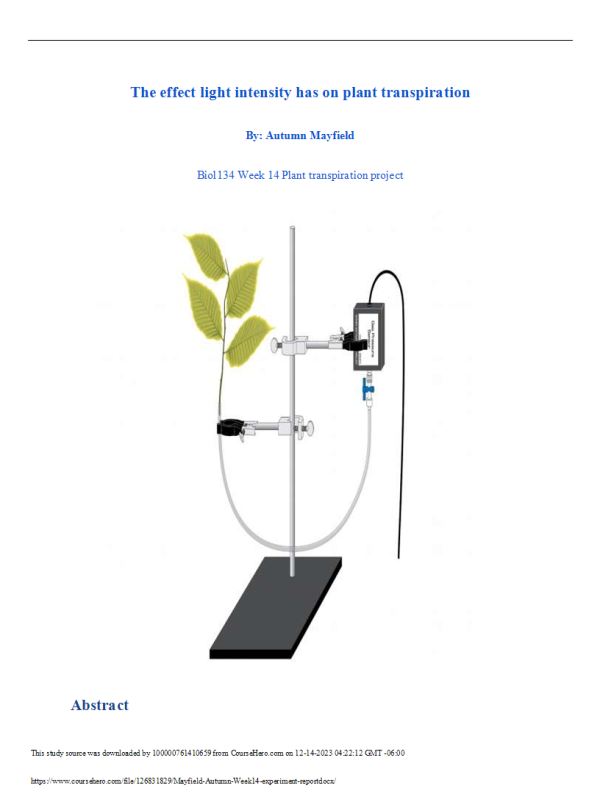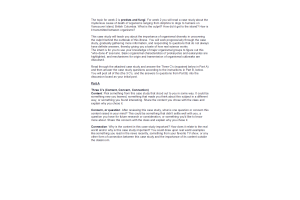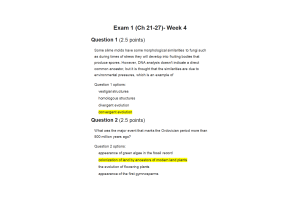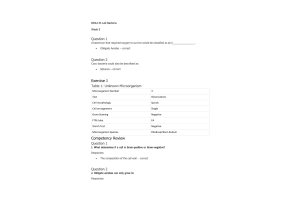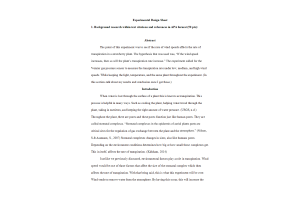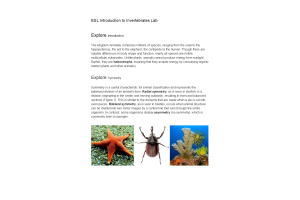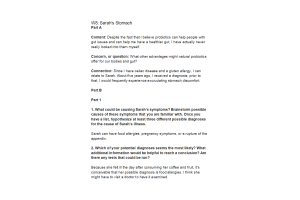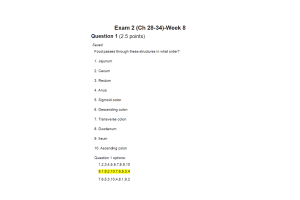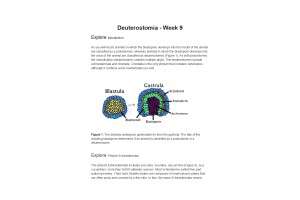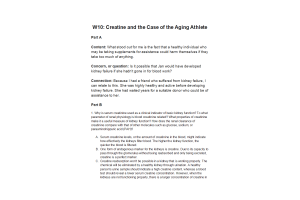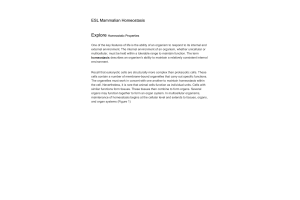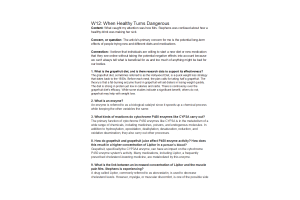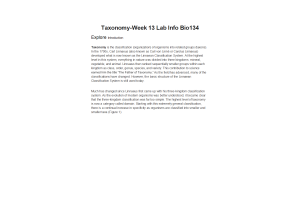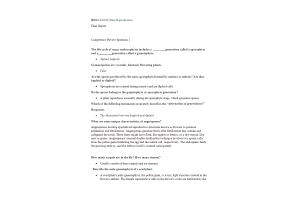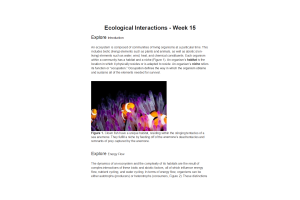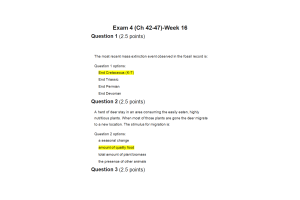BIOL134 Week 14 Course Project Experiment Report; The effect light intensity has on plant transpiration
- $20.00
The purpose of this experiment was to study the effect of different lighting on the transpiration of plants. Over the span of 15 minutes the plants were exposed to different measurements of light, then repeated 3 times to calculate the average transpiration. The experimental trend is that light intensity does affect the rate of plant transpiration, therefore as light intensifies so will the rate of transpiration.
Introduction
Transpiration is the evaporation of water from plants, it is complex involving many physical, chemical, and biological processes. This occurs during photosynthesis, when the stoma opens for passage. An increase in the co2 concentration gradient accompanied with an increased temperature may reflect the activity of enzymes active during photosynthesis. This occurs as the sun gets warm and water turns to vapor, which is then able to pass through the stoma on the underside of plant leaves. The purpose of this is to cool the plant down, and pump water/minerals to the leaves for photosynthesis.
Transpiration is affected by many environmental factors such as but not limited to, temperature, light, and humidity. Transpiration rates increase on bright days, and decrease at night. There are 2 reasons for increased transpiration rates which are the light, and temperature.
This case study uses light intensity as the independent variable, and studies its effect on transpiration. Light intensity affects the process so that more water is drawn into the leaves through transpiration, where photosynthesis normally takes place. The testable question for this experiment is What is the effect of the light on the plant compared to the darkness on a plant? The information provided in this introduction led to a hypothesis of; If light increases transpiration on a plant, then darkness will decrease transpiration on a plant……….. Continue
